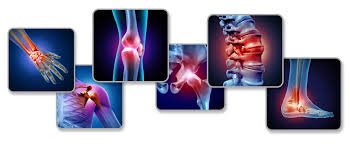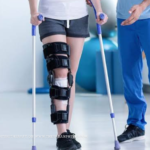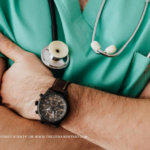A Physiotherapist’s Guide to Understanding Your Body’s Natural Response
Picture this: you’ve just twisted your ankle during your morning jog. Within minutes, it’s swollen, red, hot, and throbbing with pain. Your first instinct? Pop an anti-inflammatory pill and curse your body for “overreacting.” But what if I told you that this seemingly problematic response is actually your body’s sophisticated healing mechanism at work?
The Inflammation Paradox
As a physiotherapist, I frequently encounter patients who view inflammation as the enemy. “Doc, just make the swelling go away!” they plead. But here’s the truth that might surprise you: inflammation isn’t your enemy—it’s your body’s emergency response team rushing to the rescue.
Think of inflammation like firefighters arriving at a burning building. Yes, there’s chaos, noise, and disruption, but they’re there to contain the damage and start the recovery process.
Understanding the Inflammatory Response
Inflammation is your body’s ancient, highly evolved defense mechanism. The word itself comes from the Latin “inflammare,” meaning “to set on fire”—and that’s exactly what it feels like! But this “fire” serves a crucial purpose.
When tissue damage occurs, whether from a sprained ankle, muscle strain, or even a paper cut, your body launches a coordinated response involving:
Chemical Messengers: Your cells release substances like histamine, prostaglandins, and cytokines—think of these as emergency signals calling for backup.
Vascular Changes: Blood vessels in the injured area undergo dramatic changes. They dilate (widen) to allow more blood flow, and their walls become more permeable, allowing healing substances to leak into the tissues.
Cellular Response: Different types of white blood cells arrive in waves, each with specific jobs—some clean up debris, others fight infection, and still others coordinate the healing process.
When Inflammation is Your Friend
The Acute Phase (0-72 hours)
When you injure yourself, your body immediately activates its inflammatory response. Here’s what’s actually happening beneath your skin:
The Five Cardinal Signs Explained
You’ve probably heard of the classic signs of inflammation: redness, heat, swelling, pain, and loss of function. But why do these occur, and what purpose do they serve?
Redness (Rubor): The injured area turns red because blood vessels dilate, bringing more blood to the area. This increased blood flow carries oxygen, nutrients, and healing cells directly to where they’re needed most.
Heat (Calor): The warmth you feel isn’t just from increased blood flow—it’s also your body raising the local temperature to create an environment less favorable to bacteria and more conducive to healing processes.
Swelling (Tumor): Perhaps the most misunderstood sign. Swelling occurs when fluid leaks from blood vessels into surrounding tissues. This fluid contains proteins, antibodies, and clotting factors that help repair damage and prevent infection. It’s like your body creating a protective cushion around the injury.
Pain (Dolor): Pain serves as a protective mechanism, forcing you to rest the injured area and preventing further damage. It’s your body’s way of saying “be careful with this part!”
Loss of Function (Functio Laesa): When an area is inflamed, normal function is temporarily impaired. This isn’t a malfunction—it’s a feature designed to prevent you from causing additional harm while healing occurs.
Why Inflammation Goes Wrong
Incomplete Healing: If the initial injury doesn’t heal properly due to continued stress, poor blood supply, or inadequate rest, inflammation persists as your body continues trying to repair the damage.
Ongoing Irritation: Repetitive movements, poor posture, or biomechanical problems can keep re-injuring tissues, preventing the inflammatory response from switching off.
Lifestyle Factors: Poor sleep, chronic stress, inflammatory foods (high sugar, processed foods), smoking, and sedentary behavior all contribute to systemic inflammation that makes local healing more difficult.
Autoimmune Response: Sometimes the immune system gets confused and starts attacking healthy tissue, leading to conditions like rheumatoid arthritis or inflammatory bowel disease.
Failed Resolution: Your body has natural mechanisms to “turn off” inflammation, but these can become overwhelmed or dysfunctional, leaving you stuck in an inflammatory state.
The Consequences of Chronic Inflammation
When inflammation becomes chronic, it shifts from being protective to destructive:
- Tissue breakdown occurs faster than tissue repair
- Scar tissue formation can limit mobility and function
- Pain sensitization develops, where even normal activities become painful
- Systemic effects can impact your entire body, contributing to fatigue, depression, and increased injury risk
- Delayed healing creates a vicious cycle where tissues never fully recover
The Smart Approach: Working WITH Inflammation
As physiotherapists, we don’t aim to eliminate inflammation entirely. Instead, we help optimize it. Here’s how:
Phase 1: Respect the Process (First 48-72 hours)
During this crucial period, your goal is to support your body’s natural healing response while preventing excessive inflammation that could cause secondary damage.
Ice Therapy – The Science:
- Use ice strategically – 15-20 minutes every 2-3 hours to control excessive swelling without stopping the healing process
- Why it works: Cold therapy reduces metabolic demand of injured tissues and limits secondary cell death from lack of oxygen
- The timing matters: Ice is most beneficial in the first 48 hours when inflammation is at its peak
- Avoid: Leaving ice on too long (>20 minutes) or applying it directly to skin
Movement as Medicine:
- Gentle movement – Complete rest is rarely the answer; gentle, pain-free movement promotes healing
- The science: Movement helps pump inflammatory fluid away from injured tissues and prevents stiffness
- Examples: Gentle ankle circles for a sprained ankle, or arm swings for a shoulder injury
- Key principle: Movement should be pain-free and within comfortable ranges
RICE vs. PEACE & LOVE Protocol:
The old RICE (Rest, Ice, Compression, Elevation) protocol has evolved. Modern evidence supports the PEACE & LOVE approach:
- Protect the injured area
- Elevate when possible
- Avoid anti-inflammatories initially
- Compress appropriately
- Educate about the healing process
Phase 2: Facilitate Healing (Days 3-14)
As acute inflammation begins to resolve, your focus shifts to promoting optimal tissue repair and preventing chronic inflammation.
Progressive Loading:
- The concept: Gradually reintroduce stress to promote tissue remodeling and strength
- Why it works: Controlled stress stimulates collagen production and proper tissue alignment
- Practical application: Start with 50% of normal activity and increase by 10-20% daily as tolerated
- Warning signs: Increased pain, swelling, or stiffness indicates you’re progressing too quickly
Heat Therapy Benefits:
- When to start: Once acute inflammation settles (usually after 48-72 hours)
- How it helps: Heat increases blood flow, promotes muscle relaxation, and enhances tissue flexibility
- Application: 15-20 minutes of moist heat before activity or exercise
- Contraindications: Don’t use heat if there’s still significant swelling or acute pain
Targeted Exercise Prescription:
- Range of motion exercises – Maintain joint mobility and prevent stiffness
- Strengthening exercises – Begin with isometric (static) contractions, progress to dynamic movements
- Proprioceptive training – Restore balance and coordination to prevent re-injury
- Functional movements – Practice activities you need to return to (sports, work tasks)
Phase 3: Prevent Recurrence (Ongoing)
Long-term success requires addressing the root causes of inflammation and building resilience.
Address Underlying Causes:
- Biomechanical assessment – Identify faulty movement patterns that contributed to injury
- Postural correction – Address workplace ergonomics and daily habits
- Muscle imbalances – Strengthen weak muscles and stretch tight ones
- Equipment evaluation – Ensure proper footwear, sports equipment, or workplace setup
Lifestyle Modifications for Inflammation Control:
- Sleep optimization – 7-9 hours of quality sleep is crucial for tissue repair and inflammation regulation
- Nutrition strategy – Anti-inflammatory foods (omega-3 fatty acids, colorful fruits and vegetables) while reducing processed foods and excess sugar
- Stress management – Chronic stress elevates cortisol and promotes systemic inflammation
- Hydration – Adequate water intake supports circulation and waste removal
Maintenance Exercise Program:
- Consistency over intensity – Regular, moderate exercise is more beneficial than sporadic intense sessions
- Cross-training – Vary your activities to prevent overuse injuries
- Recovery protocols – Include rest days and active recovery in your routine
- Early intervention – Address minor aches and pains before they become major problems
Red Flags: When to Seek Help
While inflammation is normal, certain signs indicate you need professional intervention:
- Swelling that increases significantly after day 3
- Severe pain that doesn’t improve with basic measures
- Signs of infection (fever, red streaking, pus)
- Complete inability to bear weight or use the injured area
- Symptoms that worsen rather than gradually improve
The Bottom Line
Inflammation is like fire—controlled and purposeful, it’s invaluable for healing. Uncontrolled, it becomes destructive. The key is understanding when to support your body’s natural response and when to intervene.
Remember, your body has been perfecting this healing process for millions of years. As your physiotherapy partner, my job isn’t to fight against your body’s wisdom, but to help optimize it for the fastest, most complete recovery possible.
Your body isn’t broken when it becomes inflamed—it’s working exactly as designed. The goal is to work with this incredible system, not against it.





